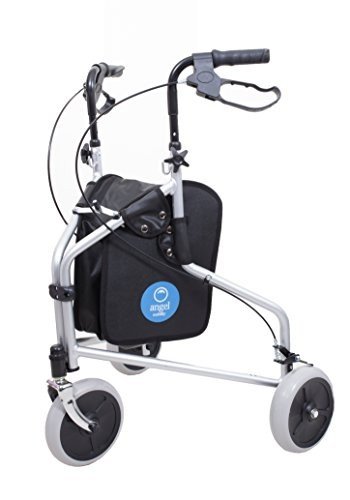10 Tell-Tale Signals You Should Know To Get A New Mobility Scooters
Mobility Scooters: A Comprehensive Guide
Mobility scooters have actually ended up being a vital mode of transport for many individuals facing mobility challenges. This post checks out the numerous facets of mobility scooters, including their types, benefits, functions, and a guide for potential buyers.
Comprehending Mobility Scooters
Mobility scooters are electrically powered gadgets developed for people with minimal mobility. They supply a means of transport for people who might have difficulty strolling but still wish to maintain their self-reliance. They come in various styles and features to deal with a large variety of needs.
Kinds Of Mobility Scooters
Mobility scooters can usually be classified into 3 main types:
Type
Description
Best For
Compact Scooters
These are small and lightweight, perfect for inside your home and short trips.
Users with minimal storage area or those who travel often.
Mid-size Scooters
A balance between mobility and stability, suitable for both indoor and outside use.
Those who require to cover a range of terrains.
Durable Scooters
Large and robust, designed for rugged outdoor usage and heavier individuals.
Users requiring extra weight capability or going off-road.
Secret Features of Mobility Scooters
The option of mobility scooter typically depends upon the features that line up with private needs. Here are a few of the crucial features to consider:
Weight Capacity: Mobility scooters feature different weight limitations. It is vital to pick a scooter that can effectively support the user's weight.
Variety: The distance a scooter can take a trip on a single charge varies. Depending upon anisavolesky.top , one may go with scooters with a series of up to 40 miles.
Speed: Most mobility scooters can reach speeds between 4 to 8 miles per hour. Consider what speed is comfortable and safe for the intended environment.
Turning Radius: A compact turning radius is important for indoor use, enabling simpler navigation in tight spaces.
Battery Type: The type of batteries used can affect the scooter's efficiency. Lead-acid and lithium-ion batteries are the most common.
Advantages of Using Mobility Scooters
The advantages of mobility scooters extend beyond simply transport. Some crucial advantages consist of:
Independence: Users can browse their environment without relying on caregivers, promoting independence and self-esteem.
Health Benefits: Using a scooter can encourage outdoor activity, leading to physical and mental health enhancements by minimizing sensations of isolation.
Convenience: Scooters can easily be run in various environments, whether inside your home, in mall, or outdoors.
Important Considerations When Buying a Mobility Scooter
When purchasing a mobility scooter, numerous considerations can help ensure that you pick the right model:
Assess Individual Needs:
- Mobility level: Consider how much help the individual will need.
- Range of use: Determine where the scooter will primarily be used (inside, outdoors, on rough surfaces, and so on).
Test Drive:
- Always test drive several designs to find an appropriate fit. Focus on convenience, ease of steering, and the scooter's responsiveness.
Review Safety Features:
- Look for scooters with adequate safety functions like lights, indicators, and anti-tip styles.
Examine Warranty and Service Options:
- A reliable warranty and offered service alternatives are essential for long-term use.
FAQs about Mobility Scooters
**1. How fast do mobility scooters go?Mobility scooters generally have speeds varying from 4 to 8 mph, with the majority of developed for safety rather than high-speed travel. 2. Are there weight restrictions on mobility scooters?Yes, mobility
scooters feature particular weight limitations, often varying from
250 lbs to over 500 lbs, depending on the design. 3. Can mobility scooters be used indoors?Certain designs, particularly compact scooters, are specifically designed for
**indoor usage and are simpler to maneuver in tight areas. 4. How frequently do the batteries require to be replaced?Battery life can vary based upon use, but normally, with appropriate care, batteries might last in between 1 to 3 years before needing replacement
**. 5. Are mobility scooters covered by insurance?Coverage can differ, however some insurance plans, consisting of Medicare and Medicaid, may cover part of the cost. It's recommended to consult specific insurance coverage providers. Mobility scooters function as a
valuable tool for many people, allowing them to keep
their liberty and self-reliance. By understanding the various types and functions of mobility scooters, individuals can make informed choices tailored to their particular requirements.
Whether utilized for errands, mingling, or leisurely activities, mobility scooters can improve the lifestyle for those with mobility limitations. Purchasing a mobility scooter is a choice that can substantially affect a person's daily life. Therefore, individuals should carefully examine their choices and pick a model that best aligns with their lifestyle and mobility requirements
.  ******
******